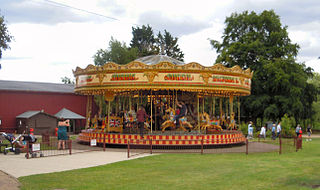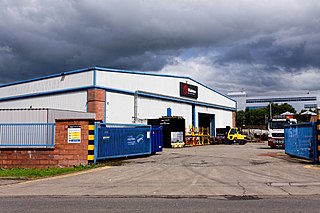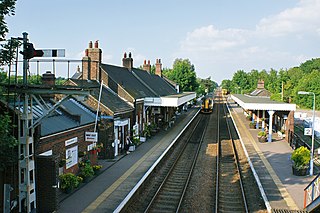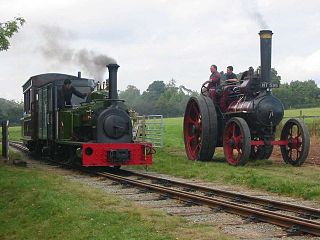
Arthur Bevan Midgley Braithwaite (born 27 July 1939 in Hoddesdon, Hertfordshire; died 25 April 2008) was chief executive of The Welding Institute and founding director of Granta Park in Cambridge.

Arthur Bevan Midgley Braithwaite (born 27 July 1939 in Hoddesdon, Hertfordshire; died 25 April 2008) was chief executive of The Welding Institute and founding director of Granta Park in Cambridge.
Bevan was from a renowned Quaker family. His father was a stockbroker and his grandfather was involved in the set-up of the Saffron Walden Railway. Bevan was brought up by his stepmother Nora (née Ford-Smith), because his Norwegian mother did not survive the postpartum period after the birth of Bevan's younger sister, in 1946. He was educated at Leighton Park School and Jesus College, Cambridge, where he obtained an MA in engineering. [1]

After obtaining a qualification as a class 1 welder, in 1961 he joined the British Welding Research Association (which subsequently became The Welding Institute and then TWI Ltd), where he conducted research on the fatigue strength of structural steel and on friction welding. In 1988, he was appointed chief executive of The Welding Institute and in 1991 was granted an OBE. He was president of the International Institute of Welding and a fellow of the Royal Academy of Engineering. In 1997, he conceived building a science park around the deteriorating buildings of TWI, going on to build new offices and laboratories for the company in its centre at Granta Park, Cambridge. [1]
Bevan got a passion for railways from the headmaster of The Downs School in Colwall, Malvern, Worcestershire, who managed the Downs Light Railway with a track gauge of 9+1⁄2 in (241 mm). He set-up the Institute of Rail Welding in 2001, built a narrow gauge railway line at Granta Park and became chairman of the Bressingham Steam Preservation Trust, at Bressingham, near Diss, Norfolk, to which he donated an ex-NCB 1991 Hunslet battery-electric locomotive and three bogie coaches from the Southport Pier Railway [2] He eagerly supported the restoration of the steam locomotive Royal Scot , which had run on the west coast main line from London to Glasgow from 1927 to 1962. [1]

The Bure Valley Railway is a 15 in minimum gauge heritage railway in Norfolk

Bressingham Steam & Gardens is a steam museum and gardens located at Bressingham, west of Diss in Norfolk, England. The site has several narrow gauge rail lines and a number of types of steam engines and vehicles in its collection and is also the home of the national Dad's Army exhibition.

The West Anglia Main Line is one of the two main lines that operate out of Liverpool Street, the other being the Great Eastern Main Line, which operates services to Ipswich and Norwich via Colchester. It runs generally north through Cheshunt, Broxbourne, Harlow, Bishop's Stortford and Audley End to Cambridge, with branches between serving Stratford, Hertford and Stansted Airport. The line runs along the boundary between Hertfordshire and Essex for much of its length.

Andrew Barclay Sons & Co., currently operating as Brodie Engineering, is a builder of steam and later fireless and diesel locomotives. The company's history dates to foundation of an engineering workshop in 1840 in Kilmarnock, Scotland.

Swindon railway works was opened by the Great Western Railway in 1843 in Swindon, Wiltshire, England. It served as the principal west England maintenance centre until closed in 1986.
The Wells and Walsingham Light Railway is a 10+1⁄4 in gauge heritage railway in Norfolk, England running between the coastal town of Wells-next-the-Sea and the inland village of Walsingham. The railway occupies a four-mile section of the trackbed of the former Wymondham to Wells branch which was closed to passengers in stages from 1964 to 1969 as part of the Beeching cuts. Other parts of this line, further south, have also been preserved by the Mid-Norfolk Railway.

Hudswell, Clarke and Company Limited was an engineering and locomotive building company in Jack Lane, Hunslet, Leeds, West Yorkshire, England.

Wymondham railway station is on the Breckland Line in the East of England, serving the town of Wymondham, Norfolk. The line runs between Cambridge in the west and Norwich in the east. It is situated between Spooner Row and Norwich, 113 miles 72 chains (183.3 km) from London Liverpool Street via Ely.
3801 is a 4-6-2 steam locomotive operated by the New South Wales Government Railways between 1943 and 1974. It is arguably Australia's most famous steam locomotive, being the only one to have visited all mainland states and territories.

Yaxham is a railway station in the village of Yaxham in the English county of Norfolk. The station is served by heritage services operated by the Mid-Norfolk Railway and is the site of the Yaxham Light Railway.

Yaxham Light Railway is a 2 ft narrow gauge light railway situated adjacent to Yaxham railway station on the Mid-Norfolk Railway. It is located in the village of Yaxham in the English county of Norfolk. The railway is listed as exempt from the UK Railways (Interoperability) Regulations 2000.

The Statfold Barn Railway is a narrow gauge railway based near Tamworth, Staffordshire and partially in Warwickshire, England. Founded by engineering entrepreneur Graham Lee and his wife Carol at their farm-based home, they originally designed what is still termed the garden railway, in which Graham could run his trains and Carol could design an extensive English country garden around a lake.

Doll is a 2 ft gauge 0-6-0T steam locomotive based at the Leighton Buzzard Narrow Gauge Railway in Bedfordshire.
Frederick Mills was Chief Mechanical Engineer of the Western Australian Government Railways from 1940 until his death in 1949. He was seconded to the Federal Government during World War II and was known throughout his career for designing a number of the influential steam locomotives for operation in Western Australia, including a number of controversial designs. No fewer than four Royal Commissions were held into various aspects of WAGR operations – including an examination of the safety of the Australian Standard Garratt locomotive and other aspects pertinent to its design and development – during his tenure, all of them into issues against which Mills himself fought unceasingly.

The Welding Institute (TWI) is a research and technology organisation, with a specialty in welding. With headquarters six miles south of Cambridge, Cambridgeshire, England, since 1946, and with facilities across the UK and around the world. TWI works across all industry sectors and in all aspects of manufacturing, fabrication and whole-life integrity management technologies.

The Coalyard Miniature Railway, opened in 1988, and relaid in 1990 as a 7+1⁄4 in gauge railway, operates in the grounds of the Severn Valley Railway’s Kidderminster Town Station. Its name is derived from a coal merchant business which operated alongside Kidderminster Town Station until 2004.

Granta Park is a science, technology and biopharmaceutical park based on the bank of the River Granta in Great Abington near Cambridge, England.

The South African Railways Dutton road-rail tractors of 1923 were road-rail steam tractors.